
Specimen description :
- Full specimen.
- Enrolled on matrix.
- Total size : 45 mm
- Lower Ordovician, Llanvirn.
- Asery level.
- Wolchow River, St Petersburg.
- Russia.
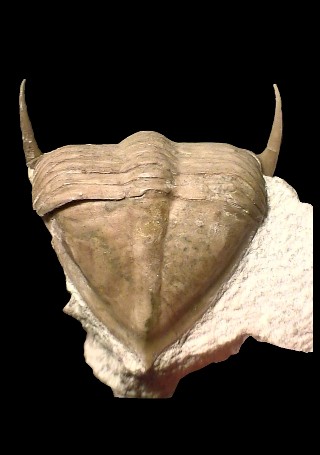
Megistaspis lawrowi
I decided to set this page up when I came back from a digging day with Gilles Alonso in the Lower Ordovician rocks of the Montagne Noire (Southern France) this summer. We found there, among many other specimen, several pygidia of Megistaspis (Ekeraspis) filacovi filacovi BERGERON and probably an unique pygidium of Megistapis (Ekeraspis) filacovi bergeroni THORAL too (this needs confirmation, as soon as I get the rocks back to my home). I will show later on these specimen, but in the meanwhile I would like to dedicate this page to Gilles for this extraordianry day he offered me, out of time, rich in experience, and beginning of a new friendship. :)
Megistapis (= Megalaspis) includes over 20 species in Europe, Asia and North America. They are average to large (sometimes gigantic) trilobites (Max length of the body of some species is up to 400 mm). M. lawrowi SCHMIDT is a very large to gigantic sized Megistaspis (Max. length of the body is up to 260 mm) found in the Lower Ordovician, Arenigian, from the upper part of the Kunda Horizon to the lower part of the Azery Horizon ( ?) of the NW of Russia (neighbourood of St Petersburg). This specimen has been collected et prepared by and at the Paleolab of St Petersburg .
 |
Specimen description :
|
 |
|
Dorsal view of the cephalon.
|
Dorsal view of the pygidium.
|
Diagnosis :
|
Order
|
Asaphida
|
SALTER 1864
|
Order including 1/5 of all the species of Trilobites,
it mostly regroup librostoms of various morphology, in which the most advanced
families do present a ventral median suture early visible in the ontogeny
( "asaphoïd" protaspid larvæ).
Occurrence : Middle-Upper Cambrian boundary to upper Ordovician-lower Silurian.
|
|
Superfamily |
Asaphoidea |
BURMEISTER 1843 |
Occurrence: Middle Cambrian to Ordovician.
|
|
Family
|
Asaphidæ |
BURMEISTER 1843 |
Family tends toward loss of apparent segmentation of cephalon and pygidium, obsolescence of axial furrows and deep notching of posterior margin of hypostoma.
|
|
Subfamily |
Asaphinæ |
BURMEISTER 1843 |
|
|
Genus |
Megistaspis (= Megalaspis) |
JAANUSSON 1956 |
The genus include over 20 species. Occurrence : Low and Middle ( ?) Ordovician of Europe, Asia and North America ( ?). Average and large (sometimes very large) trilobites (Max length of the body of some species is up to 400 mm). The cephalon and pygidium are often triangular and very oblong. Both shield are practically of equal size.
|
|
Species |
lawrowi |
SCHMIDT (?)
|
Very large to gigantic sized Megistaspis (Max. length of the body is up to 260 mm). Body fusiform and oblong. Occurrence : Lower Ordovician, Arenigian. The upper part of the Kunda Horizon and the lower part of the Azery Horizon ( ?) of the NW of Russia (neighbourood of St Petersburg).
|
Discussion :
Megalaspis ANGELIN 1851 is now considered as a synonym of Megistaspis JAANUSSON 1956 .
Complementary pictures :
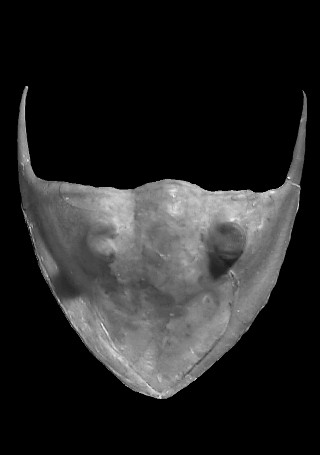 |
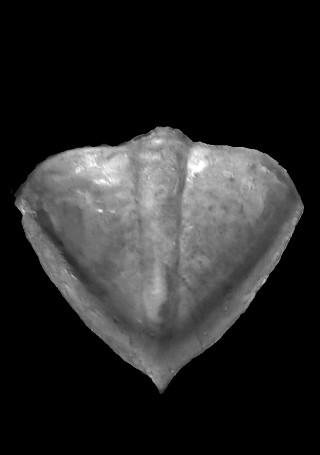 |
|
Dorsal view of the cephalon
|
Dorsal view of the pygidium.
|
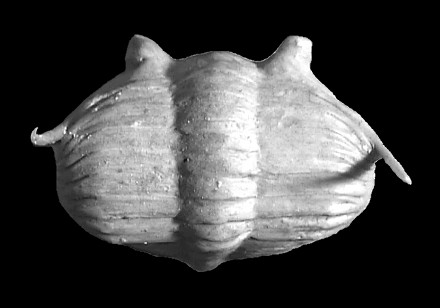 |
|
Dorsal view of the thorax.
|
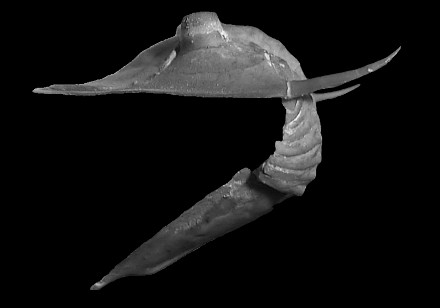 |
|
Side view of the complete specimen |
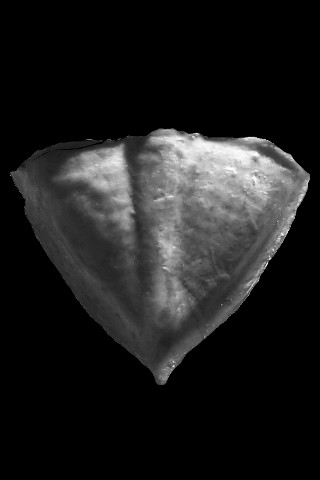 |
|
Better view of the pygidial segmentation |